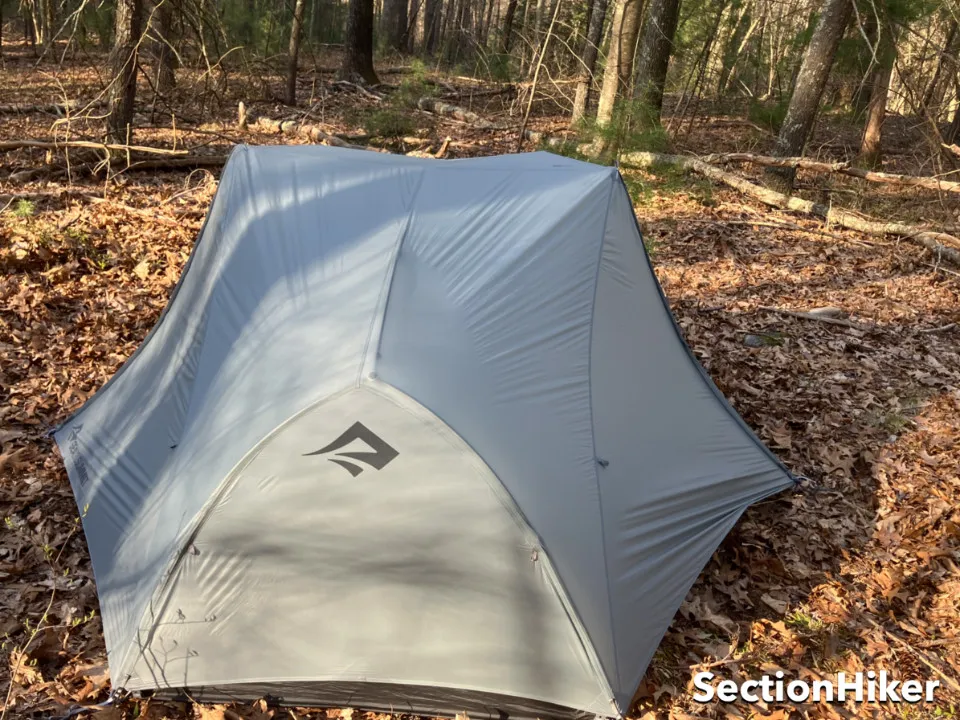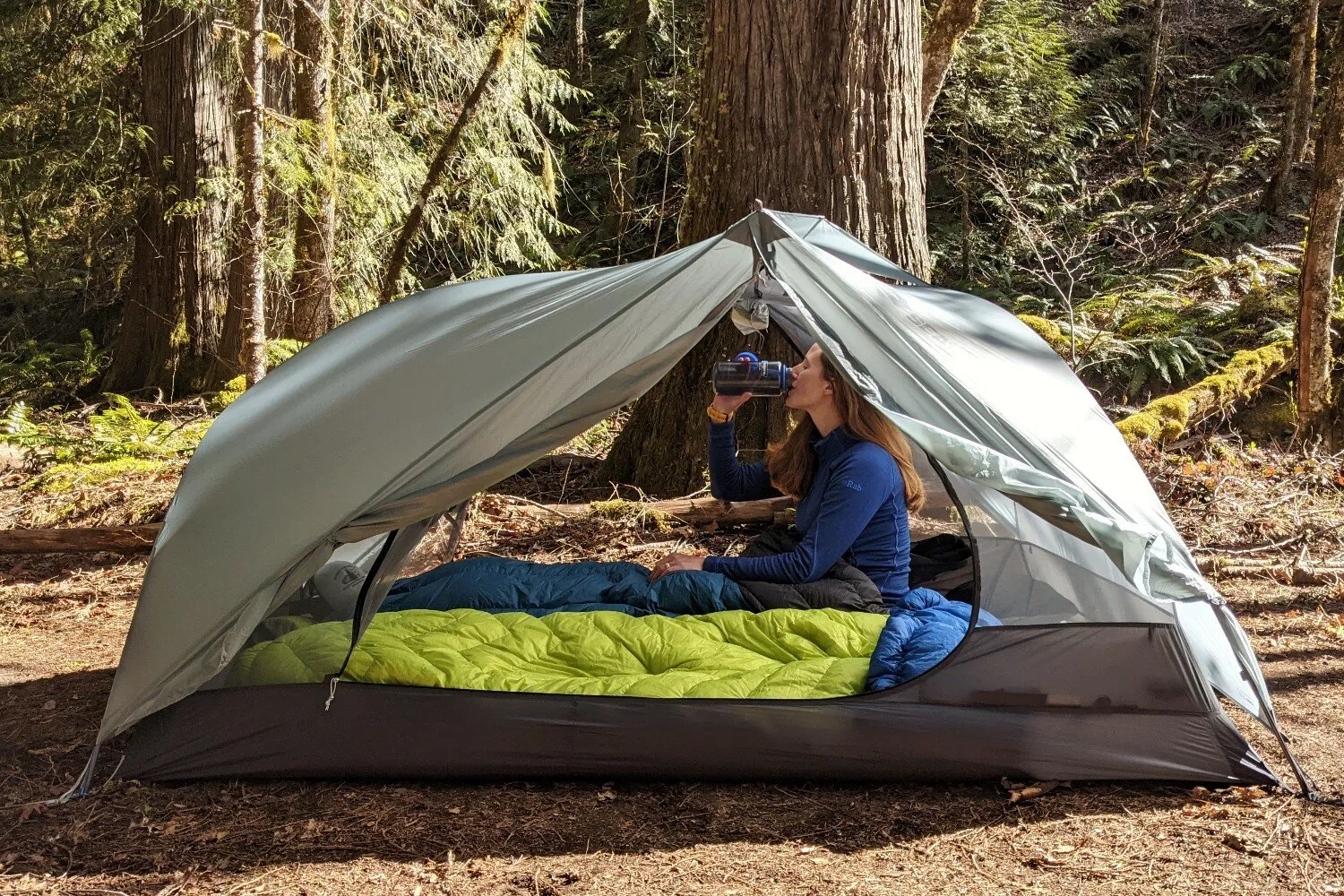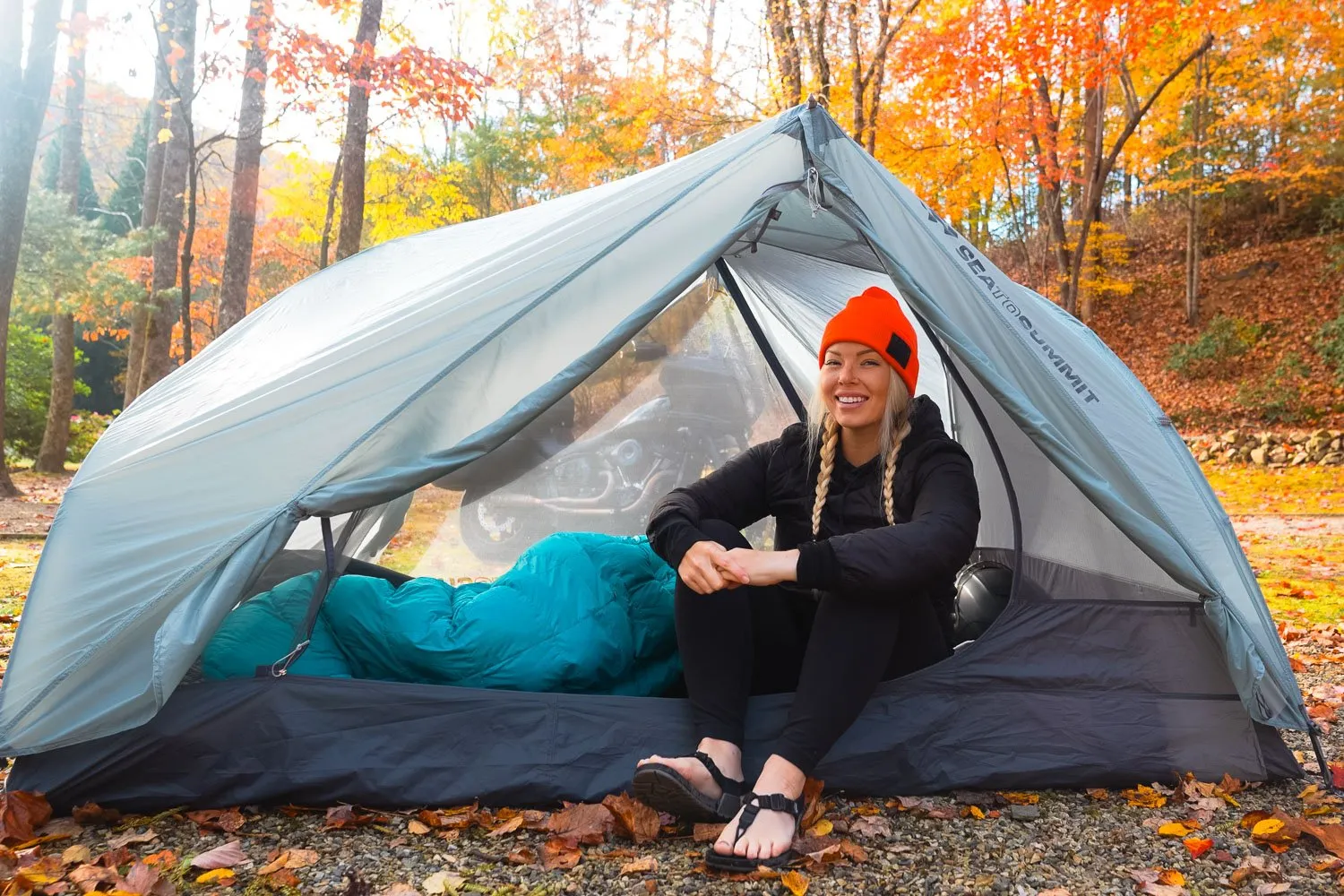
Sea to Summit Telos TR2 Plus Review 2025: The Ultimate 3+ Season Backpacking Tent
After extensive field testing across multiple seasons, I've found the Sea to Summit Telos TR2 Plus to be one of the most innovative 3+ season backpacking tents on the market. This comprehensive review covers everything from setup complexity to weather performance, helping you decide if this premium tent is worth the investment. As an experienced backpacker who's tested dozens of tents, I'll share my honest insights about this intriguing shelter that promises to revolutionize your outdoor adventures. For more tent reviews and outdoor gear insights, visit NatureGuests.com.
Overview & First Impressions

Quick Specs
- Weight: 3 lbs 9.7 oz (1.72kg)
- Capacity: 2 Person
- Season: 3+ Season
- Setup: Freestanding
- Price: $615 MSRP
When I first encountered the Sea to Summit Telos TR2 Plus, I was immediately struck by its innovative design philosophy. Unlike traditional dome tents, this shelter incorporates a revolutionary Tension Ridge system that fundamentally changes how interior space is utilized. After using it across various conditions—from windy Colorado peaks to damp Pacific Northwest forests—I can confidently say this tent represents a significant evolution in backpacking shelter design.
The "Plus" designation isn't just marketing speak; it represents a substantial upgrade from the standard Telos TR2. The key difference lies in the solid fabric inner tent, which replaces the mesh panels of the original version. This modification transforms the tent from a purely warm-weather shelter into a robust 3+ season system capable of handling shoulder season conditions with confidence.
What immediately impressed me during my first setup was the tent's modular architecture. Sea to Summit has engineered a system where components can be swapped between different configurations, though this capability is unfortunately undermarketed. The three-stuff-sack system isn't just convenient—it's transformative for gear organization and weight distribution among hiking partners.
For those considering other ultralight semi-freestanding tent options, the Telos TR2 Plus occupies a unique niche. It's heavier than true ultralight options but provides significantly more livable space and weather protection. This positioning makes it ideal for backpackers who prioritize comfort and durability over absolute weight savings.
Best Current Deals
Key Features Analysis
Tension Ridge Architecture
The most distinctive feature of the Sea to Summit Telos TR2 Plus is its Tension Ridge system. This V-shaped crossbar creates maximum headroom directly where you need it most—above your head and shoulders when sitting or lying in the tent. Unlike traditional dome designs that concentrate height in the center, this system provides usable space throughout the tent's interior.
During my testing, I found this design particularly beneficial during extended weather delays. The increased headroom near the doors makes entering and exiting significantly more comfortable, especially when wearing bulky rain gear. The system also creates natural ventilation channels that help manage condensation more effectively than traditional designs.
Solid Inner Tent Construction
The solid fabric inner tent represents the core difference between the Plus and standard versions. Made from 20-denier ripstop nylon, this inner provides substantial wind protection while maintaining breathability through strategic mesh panels at the peak. This design choice transforms the tent's seasonal capabilities, extending its usefulness into colder months when wind chill becomes a significant factor.
I tested this feature extensively during a late-fall trip to Mount Washington, where sustained winds exceeded 40mph. The solid inner eliminated the constant buffeting that would have made sleep impossible in a traditional mesh inner tent. However, this benefit comes with trade-offs in ventilation that become apparent in warmer conditions.
Multiple Setup Configurations
The Sea to Summit Telos TR2 Plus offers six distinct setup modes, each optimized for different conditions and preferences. The Classic Mode follows traditional inner-first setup, while Dry Setup allows fly-first pitching during precipitation. Partial Fly Mode creates a unique stargazing configuration, and Hangout Mode transforms the shelter into a day-use canopy.
While these options sound appealing in theory, practical implementation reveals varying degrees of utility. The Dry Setup, while functional, requires significantly more time than the Classic Mode. Hangout Mode, despite its marketing appeal, proved unstable in anything beyond light breezes. The most practical configurations remain Classic and Fly-Only modes for most backpacking applications.
Expert Review Video
FairShare Modular Storage System
The three-piece stuff sack system deserves special recognition as one of the tent's most practical innovations. Each component—poles, inner tent, and fly—packs into its own sack, which then transforms into interior storage pockets once the tent is erected. This dual-purpose design reduces pack clutter while providing convenient gear organization inside the shelter.
The pole sack's rigid construction creates the "Lightbar" feature, which can illuminate the entire tent interior when fitted with headlamps. While creative, this feature reduces available headroom and creates an awkward illumination angle for most activities. The corner storage pockets, however, prove invaluable for organizing small items and keeping water bottles upright.
Performance Comparison
Compared to other tents in its class, including the Nemo Dragonfly OSMO, the Telos TR2 Plus offers superior interior volume and innovative setup options. However, it trails in simplicity and weather reliability, particularly regarding the problematic Apex Vent system.
Performance Testing

Weather Protection Assessment
My most significant concern with the Sea to Summit Telos TR2 Plus emerged during wet weather testing. The highly-touted Apex Vent system, positioned at the tent's peak, consistently allowed water infiltration during moderate to heavy rainfall. This issue persisted across multiple test sessions, contradicting the manufacturer's claims about weather-sealed performance.
The problem stems from the vent's design and positioning. While intended to expel warm air and reduce condensation, the vent becomes a liability during precipitation. The internal access mechanism is awkward and requires reaching outside the tent to operate effectively, defeating the purpose of interior adjustment. This design flaw significantly impacts the tent's reliability in extended wet conditions.
Wind Stability Performance
The Telos TR2 Plus demonstrates mixed wind performance characteristics. The Tension Ridge system creates additional wind resistance compared to traditional dome designs, requiring more guy-out points to maintain stability. However, when properly staked and guyed, the tent withstands moderate winds effectively, with the solid inner providing superior comfort compared to mesh alternatives.
During testing in sustained 25-30mph winds, the tent remained stable with minimal movement. The DAC Featherlite poles showed no signs of stress, and the guy-out system provided adequate adjustment range. However, the tent's profile and complexity make it less suitable for extreme wind conditions compared to simpler, lower-profile alternatives.
Condensation Management
The solid inner tent creates a double-edged sword for condensation management. While it provides superior wind protection, it also reduces airflow compared to mesh designs. The limited mesh panels at the peak and door tops provide some ventilation, but this proves insufficient in humid conditions or when two occupants are generating significant moisture.
The Apex Vent, despite its leakage issues, does provide some condensation relief when weather permits its use. However, the inconvenient access and weather vulnerability make it a poor solution for most conditions. The tent performs best in dry, cold environments where the solid inner's benefits outweigh its ventilation limitations.
Key Performance Issues
- Apex Vent water infiltration during rain
- Complex setup procedures for alternative configurations
- Limited ventilation in humid conditions
- Stake compatibility issues with included hardware
Setup Complexity and Time
The Sea to Summit Telos TR2 Plus presents a significant learning curve for first-time users. The Classic Mode setup, while straightforward once mastered, requires more steps than traditional dome tents. The Tension Ridge must be properly tensioned, and the multiple attachment points demand careful attention to achieve optimal performance.
Initial setup times averaged 12-15 minutes for inexperienced users, compared to 5-7 minutes for simpler designs. With practice, this improves to 8-10 minutes, still longer than most competitors. The setup complexity becomes particularly challenging in adverse weather conditions when quick shelter deployment is crucial.
Performance Highlights
- Exceptional interior space utilization
- Superior wind protection with solid inner
- Innovative storage solutions
- Durable construction with premium materials
Pros & Cons
Pros
- Revolutionary Interior Space: The Tension Ridge system creates unmatched headroom and usable space
- Superior Wind Protection: Solid inner tent effectively blocks cold drafts and wind chill
- Innovative Storage System: FairShare stuff sacks double as interior organization solutions
- Freestanding Design: No stakes required for basic setup on various terrain types
- Premium Materials: DAC poles, YKK zippers, and quality fabrics ensure durability
- Modular System: Components can be mixed with other Telos versions for versatility
Cons
- Apex Vent Leakage: Critical design flaw allows water infiltration during rain
- Complex Setup: Multiple configurations create confusion and longer setup times
- Limited Ventilation: Solid inner restricts airflow in humid conditions
- High Price Point: Premium pricing may not justify performance trade-offs
- Stake Compatibility: Included stakes poorly matched to tent's attachment system
- Manufacturing Quality: Inconsistent finishing and loose threads reported
Overall Assessment
The Sea to Summit Telos TR2 Plus represents a tent of contradictions. Its innovative design solutions create genuinely superior interior space and weather protection, yet fundamental flaws in execution prevent it from achieving its full potential. The Apex Vent issue alone disqualifies this tent from serious consideration for wet-weather backpacking, despite its other impressive capabilities.
For backpackers prioritizing innovation and interior comfort over proven reliability, the Telos TR2 Plus offers unique advantages. However, those seeking dependable shelter in challenging conditions should consider more traditional alternatives until Sea to Summit addresses these design shortcomings.
Comparisons with Competitors
vs. Nemo Dragonfly OSMO 2P
The Nemo Dragonfly OSMO 2P represents a more traditional approach to backpacking shelter design. While it lacks the innovative space utilization of the Sea to Summit Telos TR2 Plus, it offers superior reliability and weather protection. The OSMO fabric provides excellent rain protection without the vulnerability of the Telos's Apex Vent system.
In terms of interior space, the Telos TR2 Plus offers significantly more usable headroom and shoulder space, making it more comfortable for extended stays. However, the Dragonfly's simpler design enables faster setup and fewer potential failure points. For most backpackers, the Dragonfly's proven reliability outweighs the Telos's space advantages.
vs. Big Agnes Copper Spur HV UL2
The Big Agnes Copper Spur HV UL2 takes a fundamentally different approach, prioritizing weight reduction and simplicity over interior volume. At nearly a pound lighter than the Telos TR2 Plus, it appeals to gram-counting ultralight enthusiasts. However, the space difference is dramatic—the Telos provides substantially more livable area for two occupants.
Both tents offer freestanding capability, but the Copper Spur's traditional design makes it more intuitive for new users. The Telos's complexity may frustrate those seeking straightforward shelter solutions. Weather protection favors the Copper Spur due to its proven track record and absence of problematic ventilation features.
vs. MSR Hubba Hubba NX 2
The MSR Hubba Hubba NX 2 represents the gold standard for reliable backpacking shelters. While it lacks the space innovations of the Telos TR2 Plus, it offers bulletproof weather protection and time-tested durability. The MSR's simple setup and proven performance make it the safer choice for challenging conditions.
The Telos TR2 Plus clearly wins in interior space and innovative features, but the Hubba Hubba's reputation for reliability makes it the better choice for critical applications. The price difference is minimal, making the decision primarily about priorities—innovation versus proven performance.
Comparison Summary
Interior Space
Weather Protection
Setup Simplicity
Innovation

When comparing against the Nemo Dragonfly OSMO 3P, the space advantage becomes even more pronounced. The Telos TR2 Plus provides comparable space to many 3-person tents while maintaining a reasonable weight penalty. This makes it particularly attractive for couples who prioritize comfort over ultralight specifications.
Buying Guide
Who Should Buy the Telos TR2 Plus
- Comfort-Focused Backpackers: Those prioritizing interior space and livability over weight savings
- Shoulder Season Campers: Users needing wind protection in cooler conditions
- Innovation Enthusiasts: Backpackers interested in cutting-edge design features
- Couples Seeking Space: Two-person teams wanting more room than traditional tents provide
Who Should Avoid This Tent
- Wet-Weather Backpackers: Those frequently camping in rainy conditions
- Ultralight Enthusiasts: Gram-counters prioritizing weight over space
- Simplicity Seekers: Users wanting straightforward, foolproof shelter
- Budget-Conscious Campers: Those seeking maximum value for money
Best Purchase Options
Essential Accessories
Several accessories can enhance the Sea to Summit Telos TR2 Plus experience, though some address design shortcomings rather than provide genuine improvements:
Purchasing Tips
- Consider the standard TR2 version for warm-weather use to save money and improve ventilation
- Purchase from retailers with strong return policies due to potential quality issues
- Factor in the cost of better stakes to replace the inadequate included hardware
- Test the tent thoroughly before critical trips to understand its limitations
Conclusion
The Sea to Summit Telos TR2 Plus represents both the promise and perils of innovation in outdoor gear design.
This tent delivers genuinely revolutionary improvements in interior space utilization and wind protection, creating a shelter experience that surpasses traditional designs in comfort and livability. The Tension Ridge system alone justifies serious consideration for backpackers who value interior space and innovative engineering.
However, critical design flaws—particularly the problematic Apex Vent system—prevent this tent from achieving its full potential. The water infiltration issue represents a fundamental failure that undermines the tent's reliability in wet conditions, making it unsuitable for many backpacking scenarios where weather protection is paramount.
Final Recommendation
I cannot recommend the Sea to Summit Telos TR2 Plus as a primary backpacking shelter for most users. While its innovations are impressive and its interior space unmatched, the Apex Vent leakage issue creates an unacceptable reliability risk. For $615, backpackers deserve a tent that provides consistent weather protection without compromise.
The tent might appeal to specific users who prioritize innovation and interior space over proven reliability, particularly those camping primarily in dry conditions. However, most backpackers will find better value and performance in more traditional alternatives like the Nemo Dragonfly OSMO series or MSR Hubba Hubba designs.
Alternative Recommendations
For those seeking similar features without the reliability concerns, consider these alternatives:
- MSR Hubba Hubba NX 2: Proven reliability with excellent weather protection
- Nemo Dragonfly OSMO 2P: Superior fabric technology and dependable performance
- Big Agnes Copper Spur HV UL2: Ultralight design with proven track record
Future Potential
Sea to Summit has demonstrated remarkable innovation with the Telos series, and the underlying concepts show tremendous promise. If the company addresses the Apex Vent issues and refines the manufacturing quality, a future version could become a game-changing shelter. The modular design philosophy and space utilization concepts deserve recognition as significant advances in tent design.
Until these issues are resolved, the Sea to Summit Telos TR2 Plus remains an interesting experiment rather than a reliable shelter solution. I encourage Sea to Summit to continue developing this promising design while addressing the fundamental flaws that prevent it from reaching its full potential.
Related Reading
For more tent reviews and backpacking insights, explore these related articles:
Have you used the Sea to Summit Telos TR2 Plus? Share your experiences and help fellow backpackers make informed decisions.
This review reflects honest, unbiased testing conducted over multiple seasons and conditions. No compensation was received from Sea to Summit for this evaluation.

